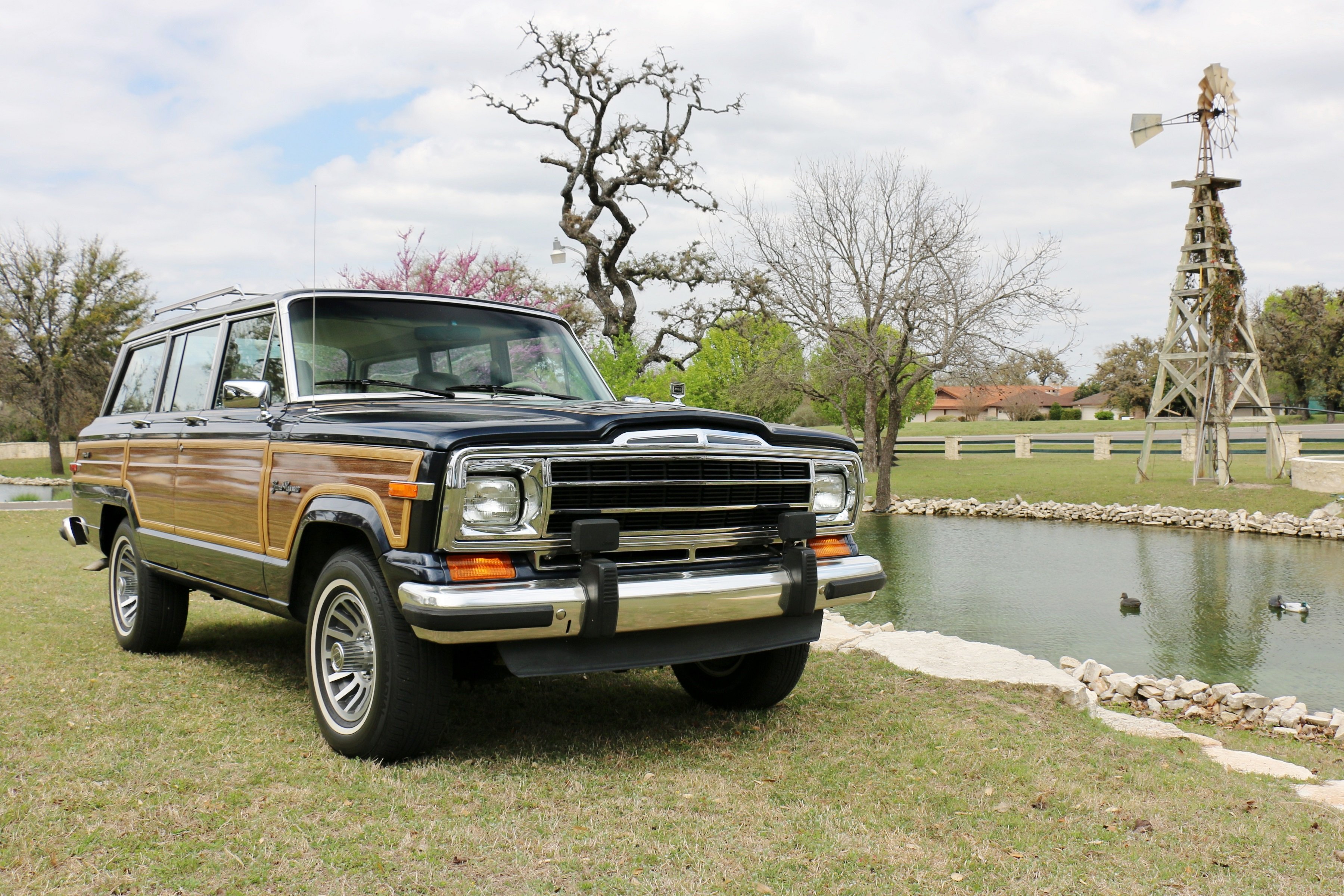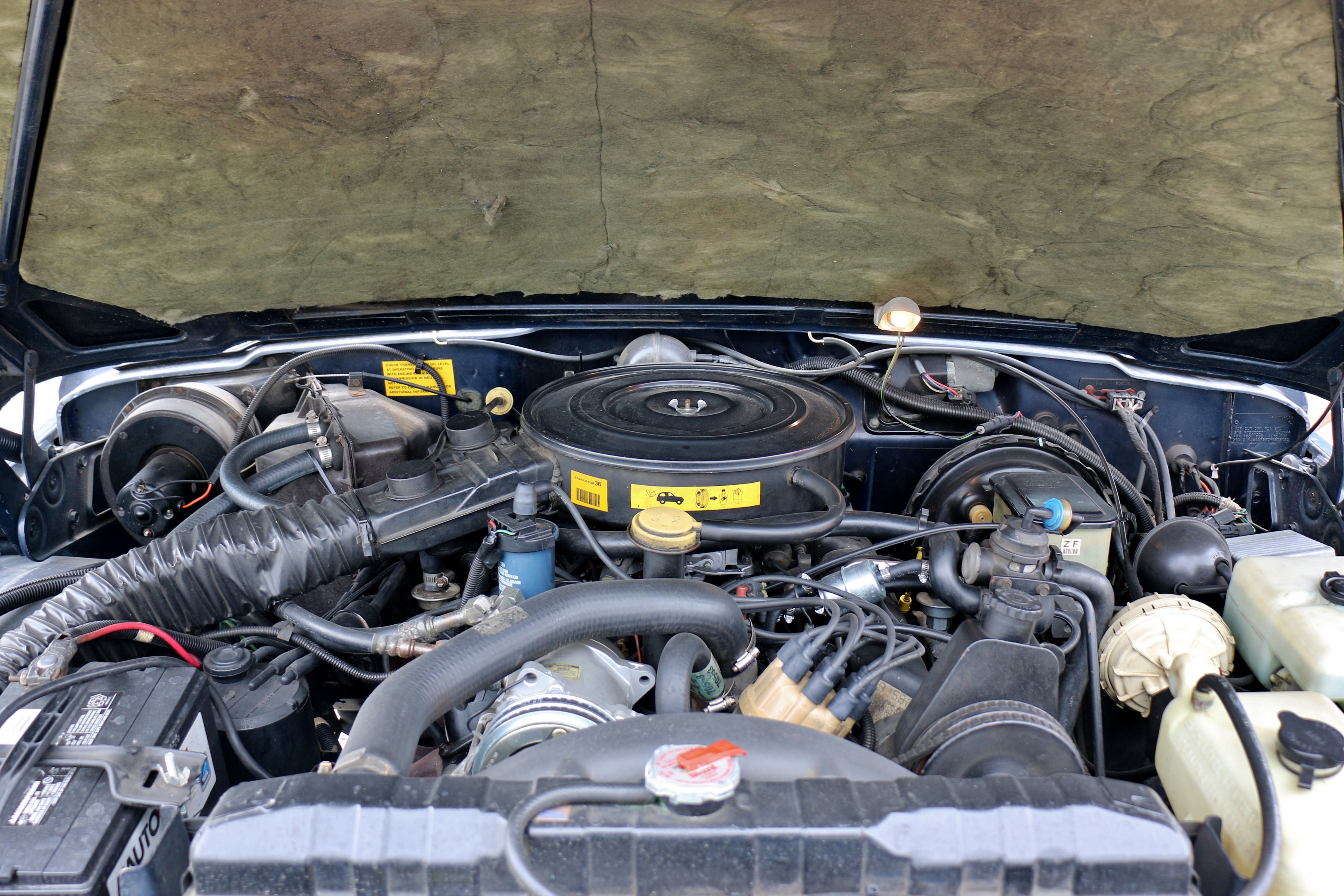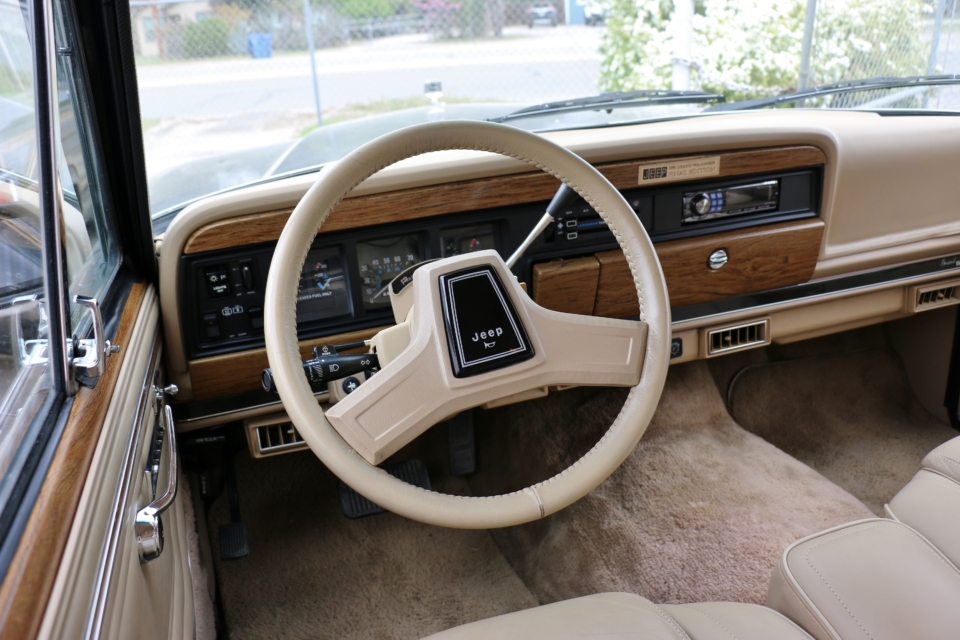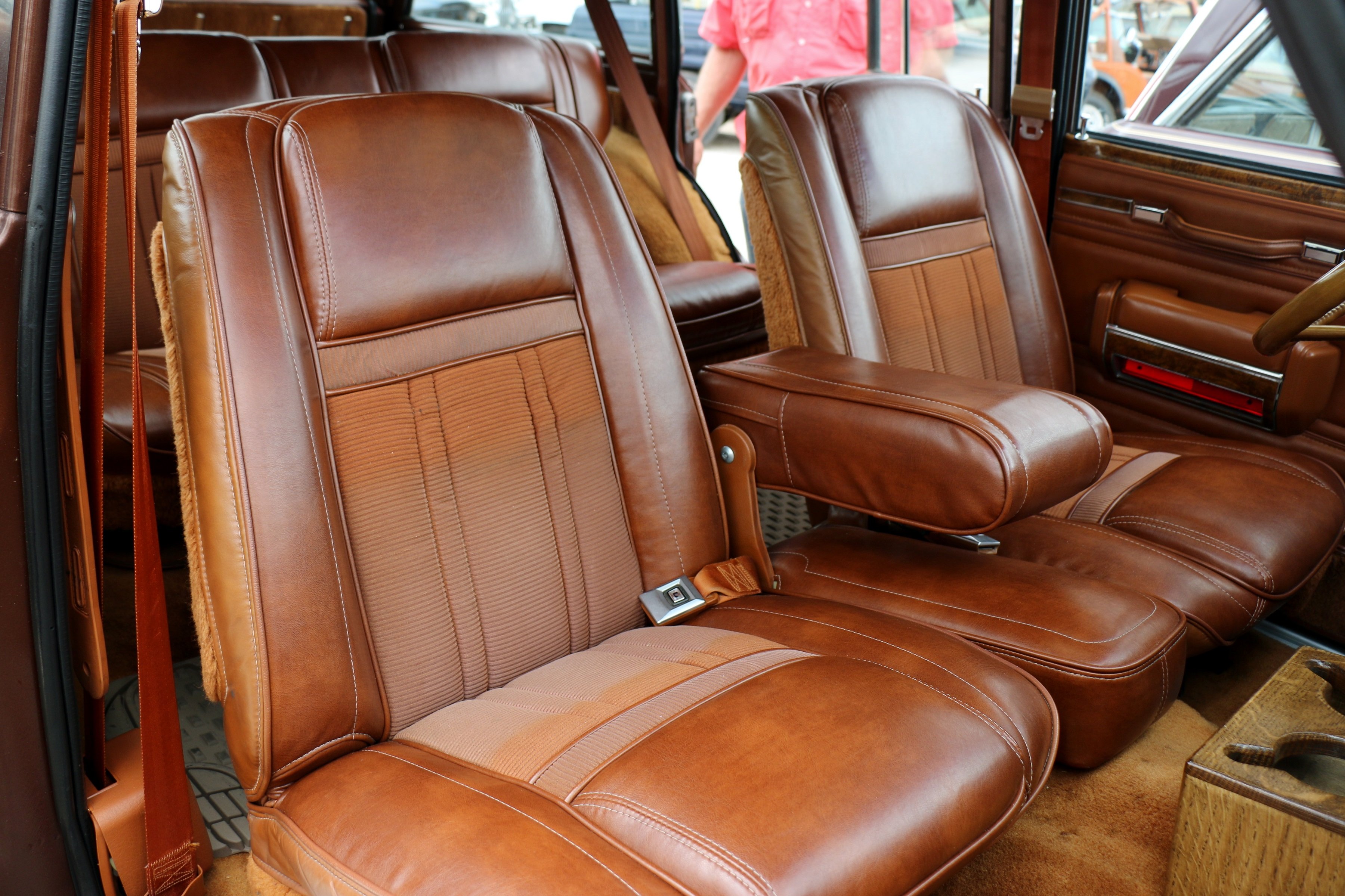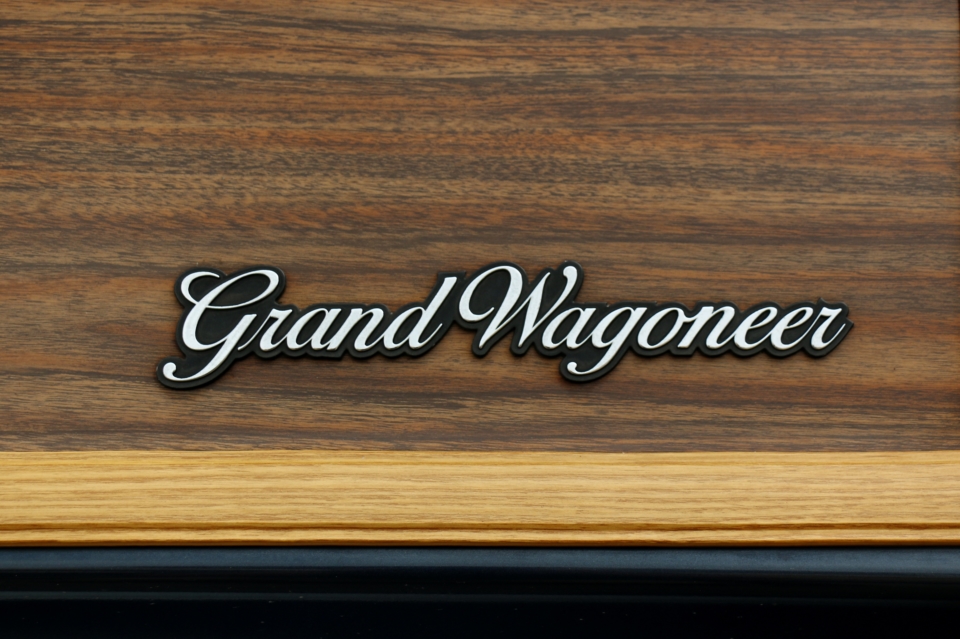The last Grand Wagoneer rolled out of Jeep’s Toledo, Ohio factory in 1991, ending a “Final Edition” run of 1,560 vehicles. Since the 1963 model year, the Wagoneer was under the corporate umbrellas of several companies, including Kaiser Jeep, American Motors, and Chrysler. It went from having a tall vertical grille and round headlamps to a wide horizontal opening and square lights. Straight-six and V8 power plants borrowed from other automakers got replaced by AMC V8s. The once all-metal sides became increasingly covered with vinyl wood-tone trim. Wraparound tail lights turned into vertical units. The name “Wagoneer” gave way to “Grand Wagoneer” in 1984. By the time Chrysler ended production in 1991, hundreds of thousands of Wagoneers and Super Wagoneers and Grand Wagoneers had been sold.
These days, you’re lucky if you see one out on the road. Wagoneers are thirsty beasts, which can be enough to scare off casual fans of the automotive icon. The newest factory models are nearly 30 years old – plenty of time for the elements and general use to turn charming idiosyncratic malfunctions into justifications for a quick sell-off. Where have all the Wagoneers gone?
There’s a man in Kerrville, Texas who has an idea. His name is Chip Miller. His business is being the Wagonmaster. Chip’s father, Leon, was the original Wagonmaster. As Wagoneer production was winding down in the early 1990s, Leon Miller contacted Jeep about whether or not it would bring the Wagoneer back. He was put in touch with Brooks Stevens, the man credited with the vehicle’s design. It was a good-news-bad-news situation: Miller learned the Wagoneer was officially dead, but Stevens himself encouraged Miller to revitalize the Wagoneers that he and so many other people loved. In 1993, Miller started the Wagonmaster business to do just that. He bought, worked on, and sold a dozen refreshed Wagoneers that first year.
Leon’s son Chip partnered with his father and started heading operations in 2010. Four years later, Chip became the full owner of his father’s business and the new Wagonmaster.
A Visit To Wagonmaster
I drove with my girlfriend Eli out to the small, sleepy Texas town to visit Chip Miller and tour the Wagonmaster facility. The lot behind a long row of regular chain link fencing may not be where all of the Wagoneers have gone, but many of them have left the property with new parts, fresh paint, and shiny simulated woodgrain panels over the past 25 years.
Between its two owners, the Wagonmaster enterprise has sold more than 1,800 revitalized Wagoneers to designers, architects, restaurateurs, and other professionals with deep pockets across the country and around the world. The residents of Nantucket Island certainly know where a good deal of Wagoneers have wound up; at one time, the 105-square-mile vacation destination was home to 38 of them.
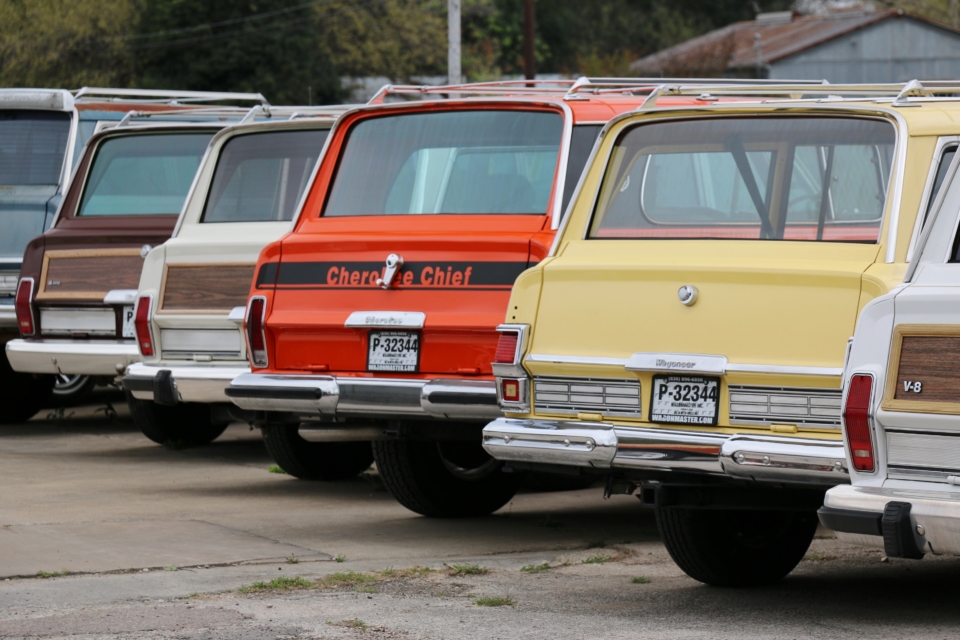
Don’t be surprised if one of these appears in a lifestyle blogger’s Instagram feed in the near future.
When Eli and I arrived at Wagonmaster, the front row of inventory was an eye-catching mix of colors: powder blue coated and patina’d that Miller intended to sell as-is; white, which Miller considers the most iconic Wagoneer color; lemon chiffon; tangerine on a Cherokee Chief with a miraculously low 6,700 original miles. Some of the street-facing vehicles were Wagonmaster conversions that their owners had sold back to Wagonmaster. As Miller put it, his company does a lot of business in its own product.
Further back on the lot, there were more Wagoneers. Some of them were too run-down and worn-out to be turned into official Wagonmaster vehicles. They would eventually be picked clean for their usable parts, such as their badges or knobs. They wouldn’t be the first Wagoneers to meet that fate. Miller had a shipping container full of “Wagoneer” and “4 Wheel Drive” badges, seats, and rolls of upholstery.
Others would one day receive the Wagonmaster treatment. Miller chose them carefully. He looks for rust- and accident-free Wagoneers, typically with less than 70,000 miles on them, although he may raise that mileage cap depending on the particular model he comes across.
Then the transformation begins.

Converting a carbureted engine to fuel injection takes about six hours, but substantially improves fuel economy.
Wagonmaster’s specialists either renew or replace the Wagoneer from its rubber to its roof. Fresh tires are a must. The underbody gets a coating of protection against corrosion. If the faux wood exterior accents are faded or wrinkled, they get thrown in the trash and replaced with shiny, straight panels.
Technicians service the suspension, steering, brakes, transmission, and electronics. To rejuvenate the four-wheel drive system, they rebuild the transfer case, replace the hubs and wheel bearings, and service the differentials and vacuum switches. The cooling system receives renewed or replacement hardware, including the thermostat, radiator, fan clutch, water pump, and hoses. Whether it’s a Tornado I6, Dauntless V8, or AMC V8, each engine gets disassembled and rebuilt with new main bearings, seals, timing chain, cover, oil pump, oil pan seal, and motor mounts.
Wagonmaster’s tech wizards also throw out the carburetor and replace it with fuel injection. That not only makes the engine more modern, but it also improves fuel economy. Miller said the swap is good for a 10- to 12-percent bump in mpg.
Skilled workers overhaul the interior by dressing it in refreshed or brand new parts including carpet, headliner, door panels, window seals, and weatherstripping.
Not every step of the Wagonmaster conversion gets done on site. Miller told me he outsources certain jobs. He uses a shop in San Antonio to lay down fresh coats of paint on each Wagonmaster build. He’s amassed quite a stock of replacement parts, but not even he can get his hands on fresh versions of the corduroy seat inserts found in many Wagoneers. When he has another San Antonio business reupholster the seats, he tells them to cut out the grooved fabric panels from the old models and attach the seats’ new leather exteriors around them.
For those willing to spend extra, Wagonmaster offers a variety of modern upgrades. The front seats can be heated. Miller has a cabinet maker craft a custom wood cup holder with space for two drinks and a newly added slot for a smartphone that fits over the transmission hump. Audiophiles can pick between two Alpine audio systems. A headrest-mounted DVD entertainment system with wireless headphones is also available. Wagonmaster will be happy to replace the standard headlights with xenon lamps, but it’s hard to imagine many customers opting for such a glaring anachronism in a vehicle that looks perfect as it is, retro technologies and all.
By the time Miller finished showing me and Eli around his property, we had come back to the front of the lot. I had been thinking about a particular Midnight Blue and Desert Tan model since we had arrived. I’m sure I wasn’t the first one to do that; Miller told me that that color combo is the most requested by his customers. That particular vehicle was more than just handsome, though. It was special in the long history of the Wagoneer. It was a 1991 model, a “Final Edition” Grand Wagoneer. Unfortunately, it hadn’t been converted to fuel injection yet and needed to warm up for a while to run to Miller’s liking.
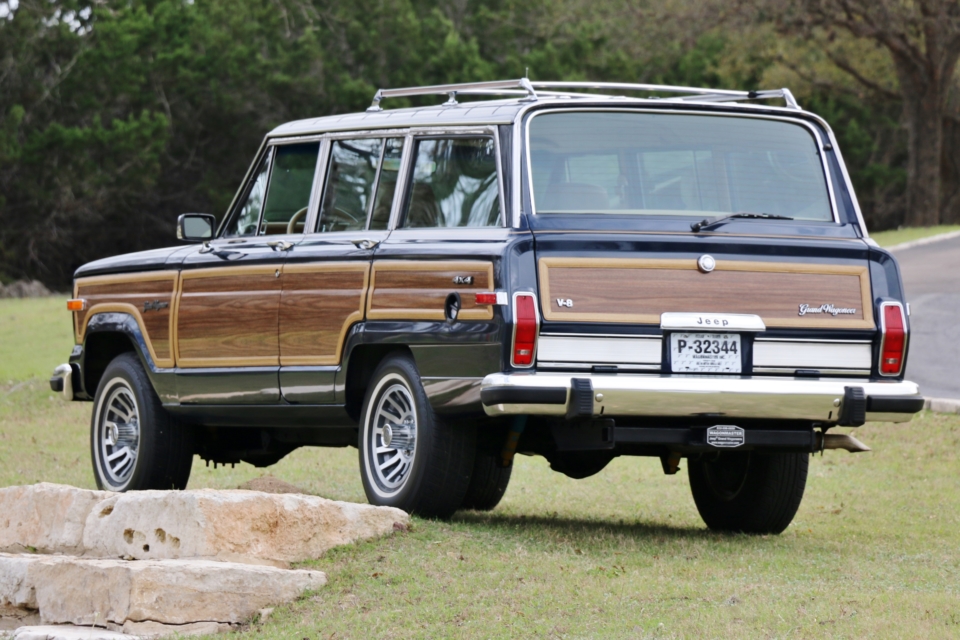
Corded phones are a thing of the past. VHS tapes are forgotten relics. But the Jeep Wagoneer is here to stay, thanks to Wagonmaster.
His free time to show me around and answer my questions was rapidly running out, so he had me ride shotgun and Eli sit in the back as he drove us out to his father’s idyllic property, full of rolling green hills, for a photography session. I was surrounded by chrome switchgear and a miniature faux forest’s worth of wood-like trim. There was a small LCD screen on the stereo head unit to my left, but it wasn’t touch-sensitive. I was in a rolling piece of yesteryear Americana that still felt relevant and fashionable.
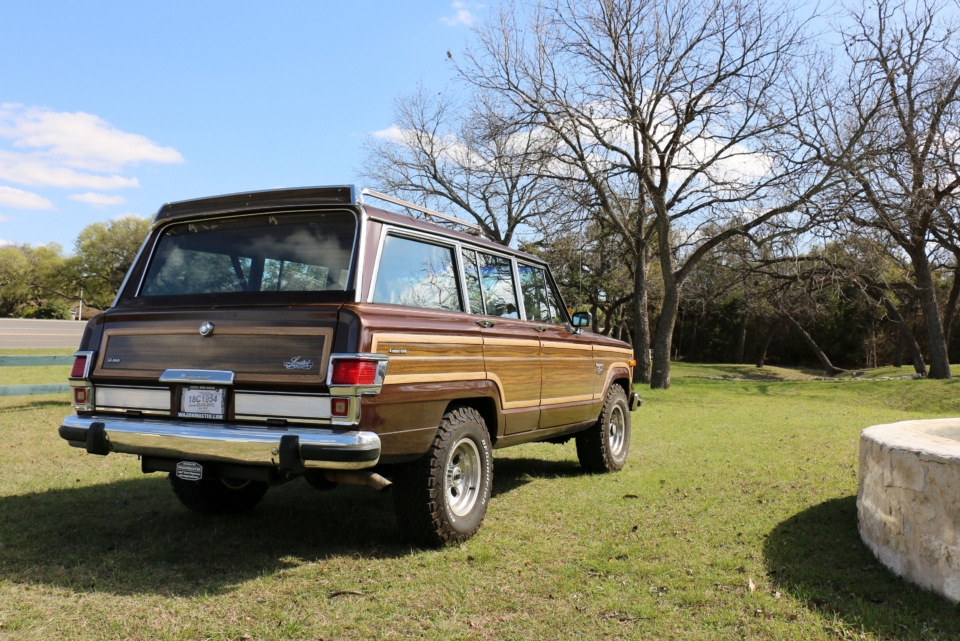
With Wagoneers like this constantly rolling down its streets, any time of the year is a great time to visit Kerrville, Texas.
Once I had finished shooting, we all loaded back into the Grand Wagoneer and returned to Wagonmaster. It was my turn to drive. Chip directed me toward “Brownie,” a brown 1983 Wagoneer Limited with rugged tires and Wagonmaster’s fuel injection conversion. We didn’t have time for to take it over rough terrain, but the short trip out to Miller’s father’s estate gave me a chance to discover what it’s like to drive such a Jeep icon.
To my surprise, the steering wheel wanted to constantly roll from side to side even if I had Brownie’s nose pointed straight ahead. Taking Miller’s suggestion, I planted my left wrist at the 12 o’clock position on the wheel to keep the Wagoneer’s signature steering play to a minimum.
The inside of a Wagoneer is a great place to be and be seen.
We chugged along down one of Kerrville’s main thoroughfares, the massive V8 making the low-speed journey in a state of semi-sleep. As glamorous as it was to drive and be seen in the Wagoneer, the driving experience didn’t feel so elegant when I ran over rough pavement. The Wagoneer may still be a status symbol, but its origins lie in an old-school truck chassis. As soon as I saw a red light up ahead, I readied my right foot; bringing Brownie to a stop required constant, substantial pressure on the stiff brake pedal.
After learning and adjusting to the Wagoneer’s quirks, I decided Wagonmaster had succeeded in building a “restomod” the right way. It had breathed new life and dependability into all of the Wagoneer’s vital mechanical parts and made the body and interior around them look new, but didn’t ruin the Wagoneer’s handsome design with a wild paint job, gaudy wheels, or other tasteless concessions to modern times. Wagonmaster didn’t polish the SUV’s rustic simplicity away. Most importantly, it didn’t obscure the Jeep legend’s identity. A Wagonmaster conversion is still a Wagoneer.
At the beginning of this year, FCA announced it was going to make a major investment in its Warren Truck Assembly Plant to prepare it for production of the new Wagoneer and Grand Wagoneer models. Given the current craze for high-end SUVs, I have no doubt Jeep will sell droves of them.
I’m also confident that Wagonmaster will continue selling its thoroughly refinished Wagoneers. I still may not know where all of the 1963-1991 Wagoneers have gone, but the next time I see one out on the road with gleaming paint and glossy vinyl imitation wood trim, I’ll have a good idea of where it came from.





